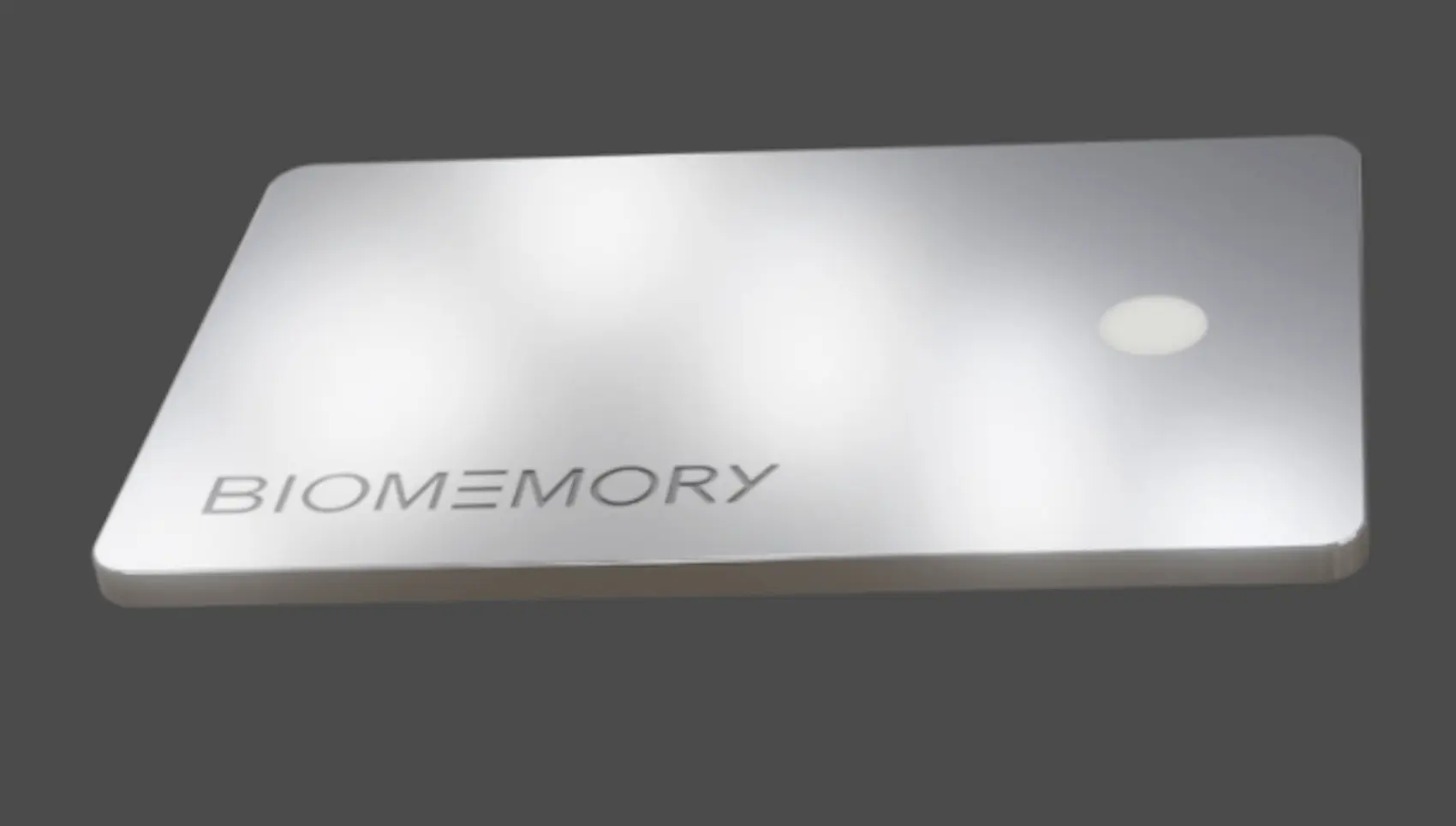Biomemory, a French digital storage startup, recently unveiled encapsulated DNA storage devices the size of credit cards, holding personalized messages as brief proofs of concept, highlighting a bold long-term vision. Costing $1000 per kilobyte despite only storing trivial data represents the beginning of probing public receptivity while refining technical capabilities.
In today’s digital era, vast amounts of data are continuously created and consumed around the world. From personal photos and documents to movies, emails, and massive databases, the global data sphere is expected to grow to over 180 zettabytes by 2025. To store all of this information, data centers occupying giant warehouses and consuming tremendous energy are necessary. But some scientists foresee an alternative storage medium that could be far smaller and last nearly forever – DNA.
DNA is nature’s own intricate molecular filing system, encoding genetic blueprints for life in sequences of four chemical bases – adenine, cytosine, guanine, and thymine (A, C, G, and T). This dense coding language has inspired some companies to encode non-biological digital data into customized DNA strands. Given DNA stability over centuries and the immense volumes capable of fitting inside a tiny space, it has generated enthusiasm as a futuristic solution to growing global data storage needs.
However, viable commercialization remains distant and speculative. Technical limitations persist around the costly, slow, and error-prone process of writing and reading DNA sequences. And no app demanding this niche solution has surfaced beyond narrow special use cases. Still, the parallels between information technology progression and DNA synthesis advances suggest keeping an open mind.
This futuristic prospect recently took modest steps towards market availability as French startup Biomemory opened pre-orders last month for encapsulated DNA storage devices holding personalized messages. However, their inaugural commercial offering highlights substantial present-day limitations curbing applicability beyond extremely narrow niche interest given high costs, tiny capacities, cumbersome retrieval, and strict access constraints.
DNA’s biological programming role relies upon reliably propagating genetic blueprints across generations without errors accumulating. Myriad cellular repair and proofreading mechanisms zealously defend the integrity of these enduring molecular scriptures. Synthetic DNA strands stably housed benefit indirectly from the same intrinsic protections.
Researchers confirm DNA durability measures easily in centuries when properly stored as lyophilized powders or other formats isolated from chemicals or light exposure degrading nucleic acids. Envisioned high-tech archives might navigate far longer, barring uncontrolled environmental factors like background radiation. Already handily outpacing the vulnerability of manufactured digital storage technologies by orders of magnitude regardless.
Meanwhile, experts established the immense volumes of data representable in DNA given bases encoding two bits per nucleotide. Converting digital binary to quaternary DNA permits packing vastly greater informational density within analogous physical volumes. Researchers stored 200MB in DNA occupying a fraction of a teaspoon – impossible to match optically or magnetically. Further biochemical optimization promises vastly greater efficient compression.
The storage mechanism operates by transforming digital data into the building blocks of DNA, as mentioned above. Following the encoding procedure, Biomemory produces a distinctive DNA strand by chemically synthesizing it, building it base by base to replicate the intended sequence. Wired reports that this synthesis process takes approximately eight hours for one kilobyte of data. Subsequently, Biomemory dehydrates the data and affixes it onto the round chip of its DNA card, which is sealed to prevent the ingress of oxygen.
When it’s time to access the data, send one of the two DNA cards to Eurofins Genomics, Biomemory’s partners. Once processed, you’ll receive a sequence of A’s, C’s, G’s, and T’s via email, which you can decode using Biomemory’s DNA translation feature. Since the card won’t be returned after decoding, a copy is provided. Without sending it to the lab (or having a DNA sequencer), the card is essentially nonfunctional.
We’re currently distant from fully harnessing the potential of DNA storage. According to a Science report, a single gram of DNA can accommodate an impressive 215 petabytes—equivalent to about 215 million gigabytes—in a container roughly the size and weight of two pickup trucks. However, until we overcome the necessity for extensive lab work, DNA storage is likely to remain experimental, limited to storing music videos, short clips, photos, or brief lines of text.
Story Source: Reference Article
Learn More:
Dr. Tamanna Anwar is a Scientist and Co-founder of the Centre of Bioinformatics Research and Technology (CBIRT). She is a passionate bioinformatics scientist and a visionary entrepreneur. Dr. Tamanna has worked as a Young Scientist at Jawaharlal Nehru University, New Delhi. She has also worked as a Postdoctoral Fellow at the University of Saskatchewan, Canada. She has several scientific research publications in high-impact research journals. Her latest endeavor is the development of a platform that acts as a one-stop solution for all bioinformatics related information as well as developing a bioinformatics news portal to report cutting-edge bioinformatics breakthroughs.









